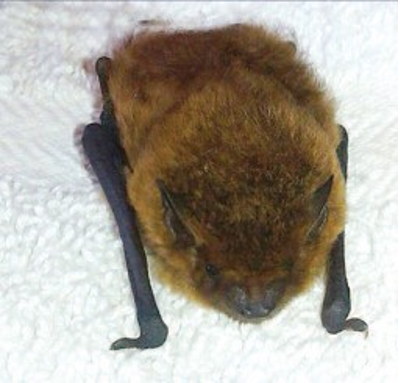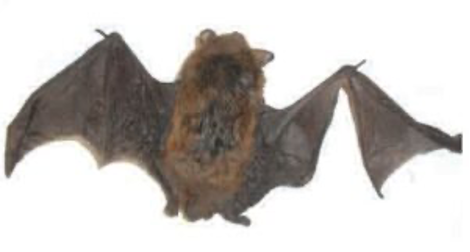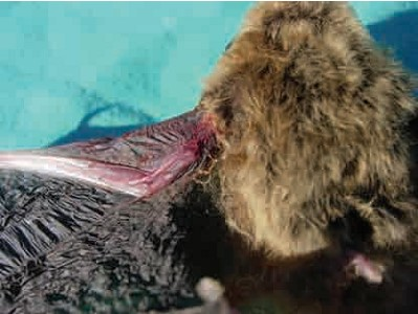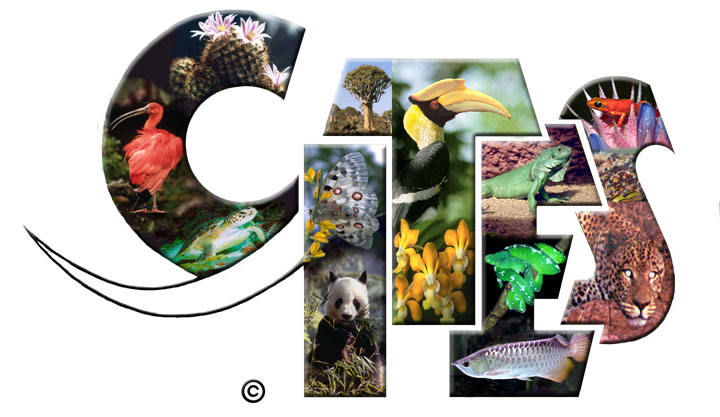What to do if you find a bat in your home?
When we find a bat on the ground or hanging around the house, it is very important to know if it is a baby bat or an adult. As strange as it may seem, the most common bat adults are no longer than a thumb. To tell them apart, we have to look at their fur.

If they do not have fur (A, B or C), it is a newborn baby that has fallen from the shelter.
The first thing we have to do is locate the shelter where it fell from. If we get there, we will place the baby as close as possible to the entrance of the shelter so that it can enter and be reunited with its mother.
If we cannot locate the shelter or we do not get there, we will take the baby with a towel and give it heat. Since they do not have fur, the babies quickly cool down, and without the necessary heat, they end up dying. Also, if they are very exposed, they can end up dehydrated by the heat of the day.
Once we have the baby, the most advisable, safe and ethical thing to do is to take it to a wildlife recovery center or call the nearest one.
To give it strength during the wait until it arrives at the recovery center, we can feed it with cat milk (the one used to feed small kittens) using a syringe. We put a piece of foam in the baby’s mouth as a teat. In this way we will wet the foam with milk and the baby will feed. This is the safest way, as we will avoid possible choking and drowning.
If it has shiny, short and loose grey fur (it looks like new fur like in image D or E): in this case it is a slightly older baby that can keep warm on its own. In this case we will do the same procedure. We will see if we can return it to the shelter and if not, we will place it on a towel to provide it with warmth and shelter and we will give it a little water or cat milk. The safest and most recommended thing to do is to take it to a wildlife recovery centre and/or call forestry or environmental agents.
If it has compact, abundant and long fur (F). In this case, no matter how small the animal is, it will surely be an adult. For adults, it is recommended to pick them up with a towel and avoid any manipulation with bare hands (to avoid them biting us when defending themselves). Once we have it on the towel, we will place it inside a shoe box with the towel and give it water to hydrate it.
Depending on the state of the bat, we can do two things:
Once carefully captured, at dusk, we will place the bat on the trunk of a tree that does not have many branches, since the bat will tend to climb the trunk. We will have to make sure that the bat flies away, otherwise it means that it has some problem with its wings. This can take a while depending on how active the bat is. If it does not fly away after half an hour, we will pick it up again and take it to a wildlife recovery center. Important! Adult bats have the ability to save energy by cooling their body, which can make them look like they are dead. We have to make sure that it moves.
If we pick up a bat from the ground, it may have a problem with its wings, or wounds caused by a predator (cats or parrots). The best thing in these cases would be to take it to a wildlife recovery centre and/or call forestry or environmental agents to take charge.
In the case of being bitten, as a precautionary principle, it is essential to go to the doctor to assess the administration of post-exposure prophylaxis against rabies and to keep the bat available for analysis.
Many bats share our cities with us, providing us with numerous benefits. It is in our hands to make this coexistence possible and for everyone to win.
Author and more information: www.SECEMU.ORG
















